
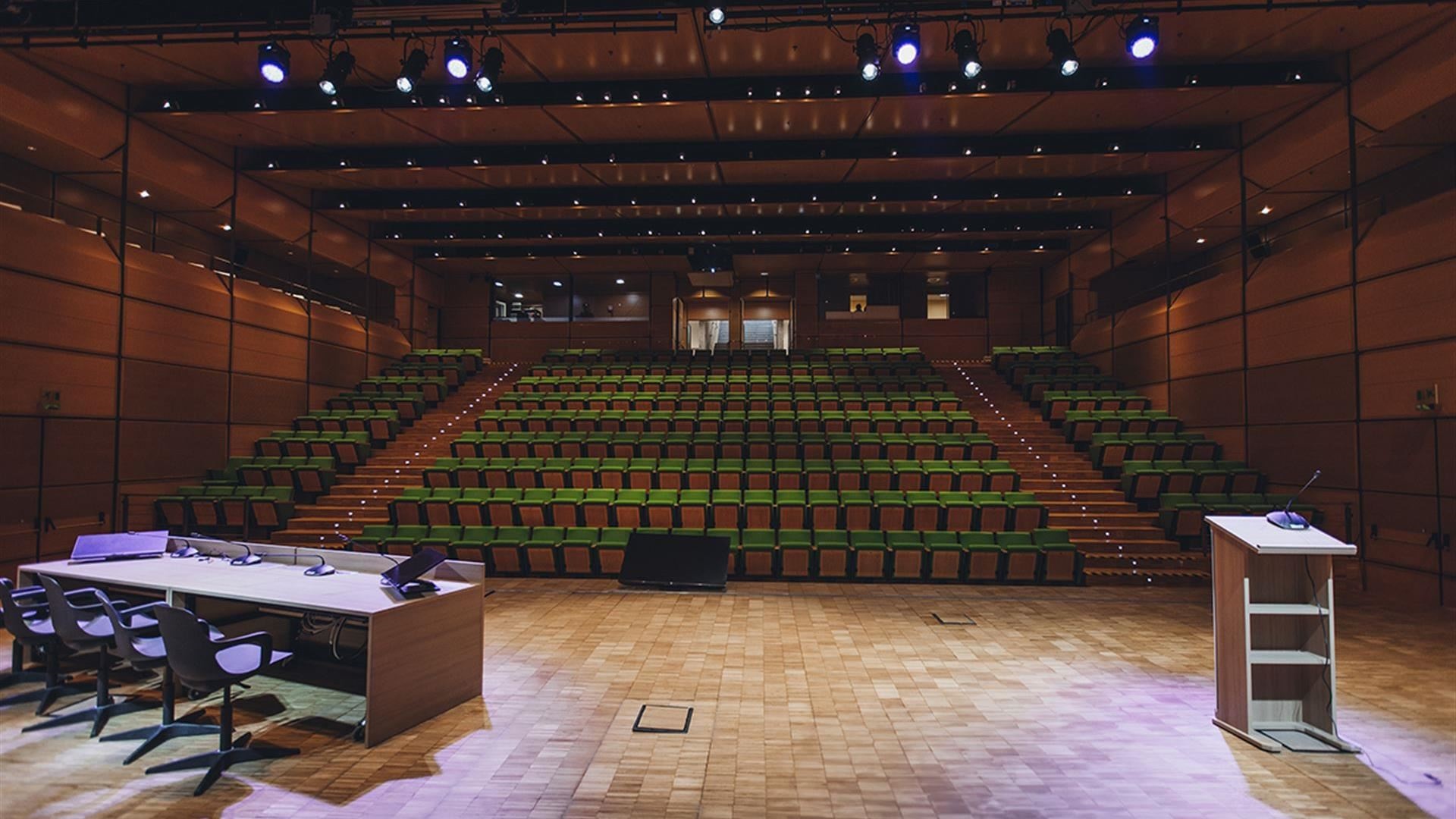

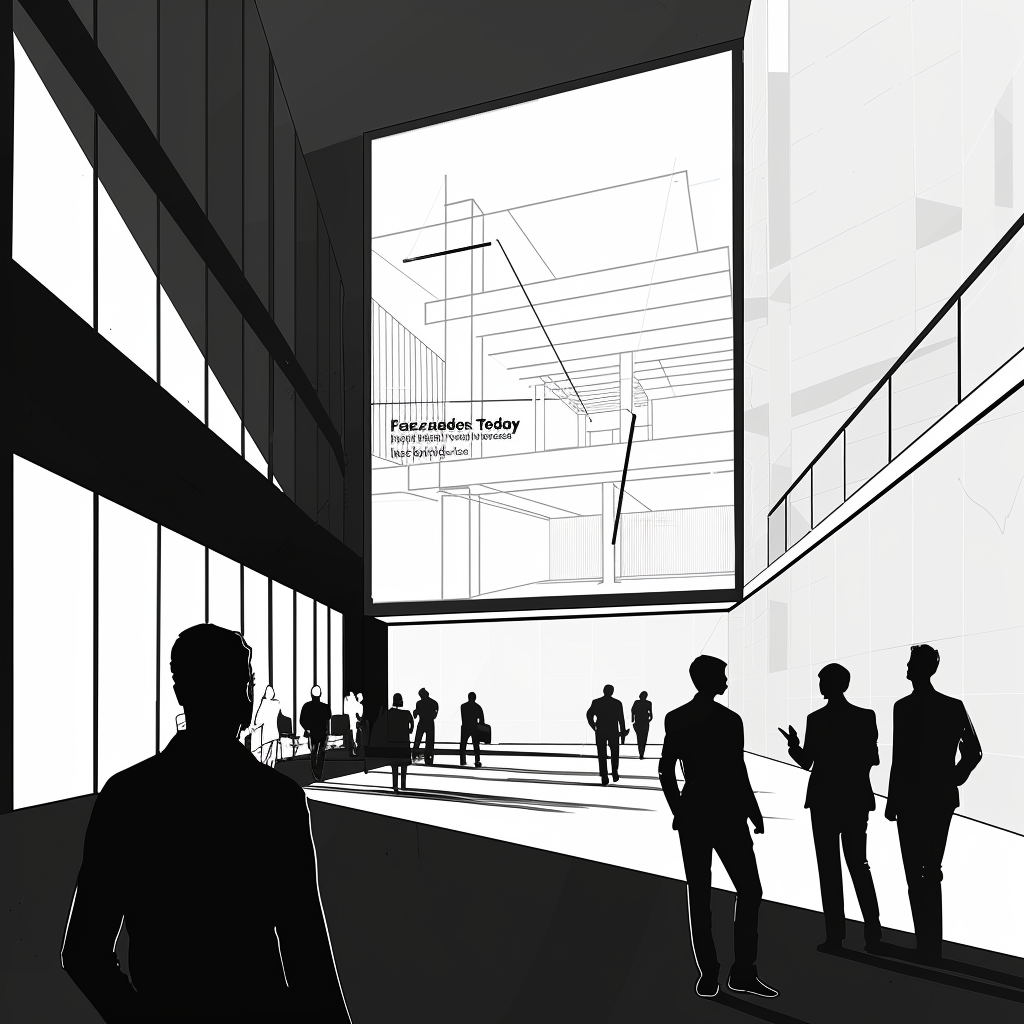














In an era of increasing urban vulnerability — from accidental detonations to intentional attacks via drones or compact IEDs — building facades must be reimagined as the first line of defense.
Nowhere is this more evident than in the case of laminated glass windows, which bridge the line between openness and protection.
In their paper, “Numerical investigation of glass windows under near-field blast”, Chiara Bedon (University of Trieste), along with Damijan Markovic, Vasilis Karlos, and Martin Larcher (European Commission’s Joint Research Centre), dive into the structural dynamics of glass subjected to extreme blast loads at close range, a scenario underrepresented in current engineering standards.
This contribution goes beyond structural analysis — it pushes the boundaries of what we know about glazing, adhesives, failure progression, and safety thresholds in civilian and security architecture.
The outcome? A comprehensive simulation protocol for blast vulnerability, applicable to embassies, transport hubs, cultural institutions, and urban resilience design.
Laminated safety glass has become the go-to material for modern façades.
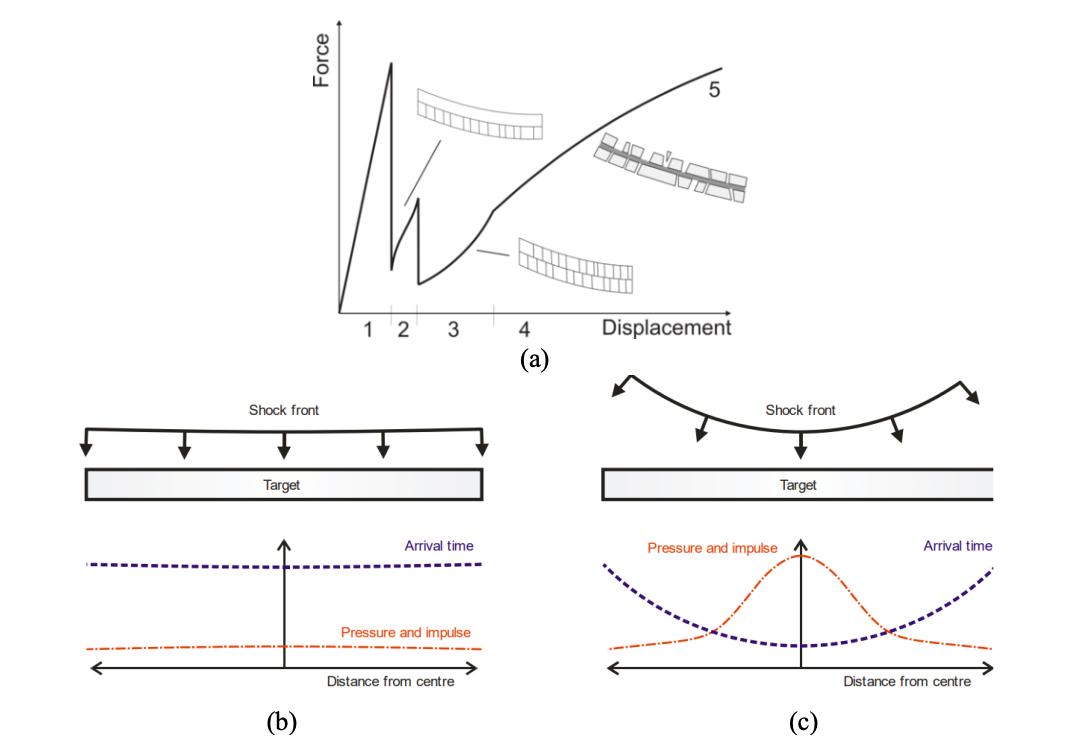
Offering transparency, post-breakage integrity, and improved performance under thermal and mechanical load, laminated glazing is everywhere — from airports to museums, train stations to skyscrapers.
However, most façade design codes (e.g. ISO, ASTM, EN standards) and associated blast guidelines consider medium- to far-field explosions (i.e. detonation distances ≥ 10 meters). These cases generate near-uniform pressure distributions and can be modeled via simplified Single Degree of Freedom (SDOF) systems.
In contrast, near-field blasts — such as those from drones or small payloads planted on site — act within 1–5 meters from the target. Their impact is far more complex:
The engineering community lacks clear procedures or predictive tools for these cases. Enter this study — one of the first to offer validated 3D numerical models of laminated glass response under near-field conditions.
The authors constructed three numerical models of glass windows (LGW-1, LGW-2, LGW-3) using ABAQUS/Explicit software. These models represented typical double-laminated glass panes (6 mm + 6 mm) with PVB interlayers (2.28 mm).
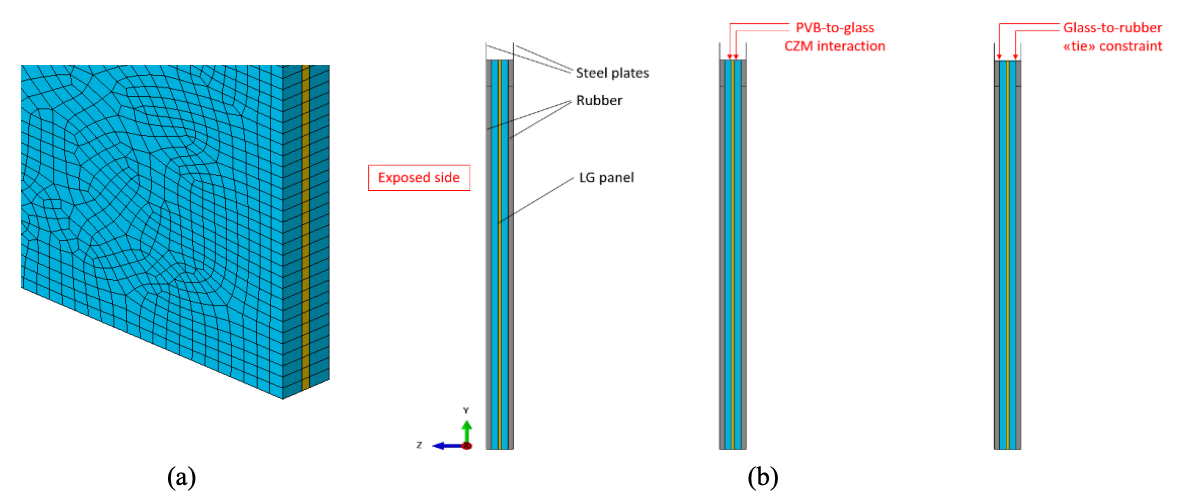
The key features of the modeling architecture:
Explosions were modeled using the CONWEP blast function, derived from empirical data of TNT detonations (Kingery–Bulmash equations). Each simulation assumed the explosive mass (W) was equivalent to a TNT sphere, placed at a defined stand-off distance (R) from the center of the glass pane.
Detonation distances ranged from 0.5 m to 10 m, and reflected pressure histories were applied directly to the external glass surface — incorporating peak overpressure, impulse, and decay time constants.
Before applying the parametric study, the authors validated their model against two experimental datasets:
Results showed excellent agreement in:
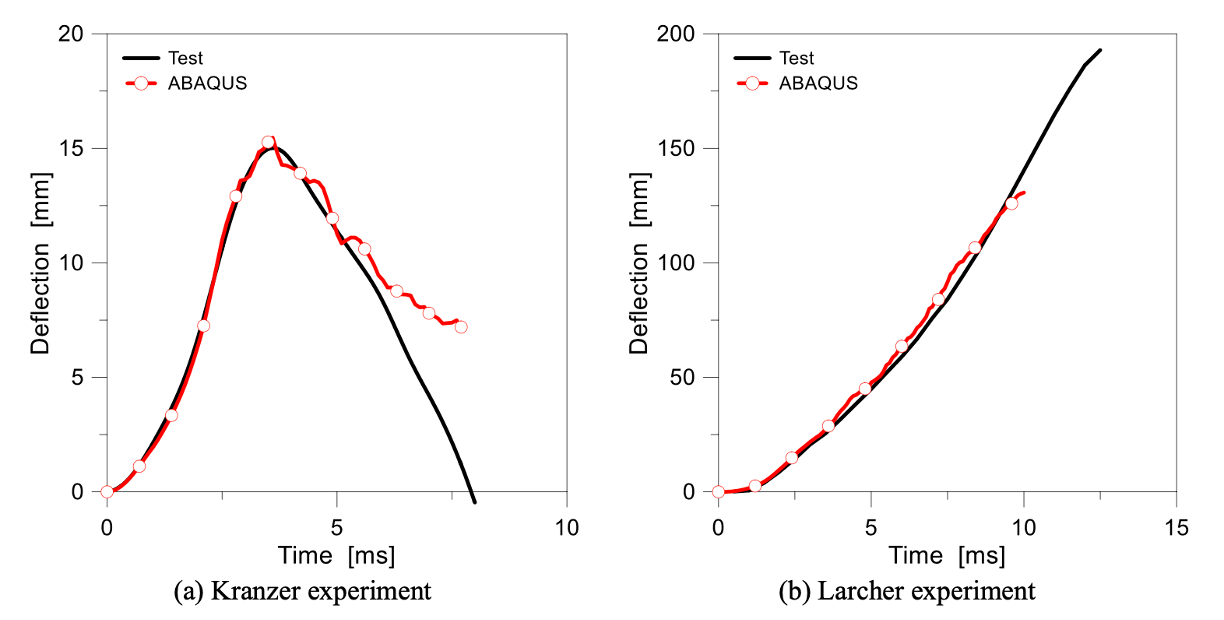
The model proved robust even in reproducing secondary fracture mechanisms like edge-induced breakage and glass spalling under reflected waves.
The key objective was to identify W_min — the minimum explosive mass required to initiate significant damage for each window size and configuration. For a given pane, W_min decreased sharply with shorter R, confirming that stand-off distance is the most critical parameter in blast design.
Simulations revealed that:
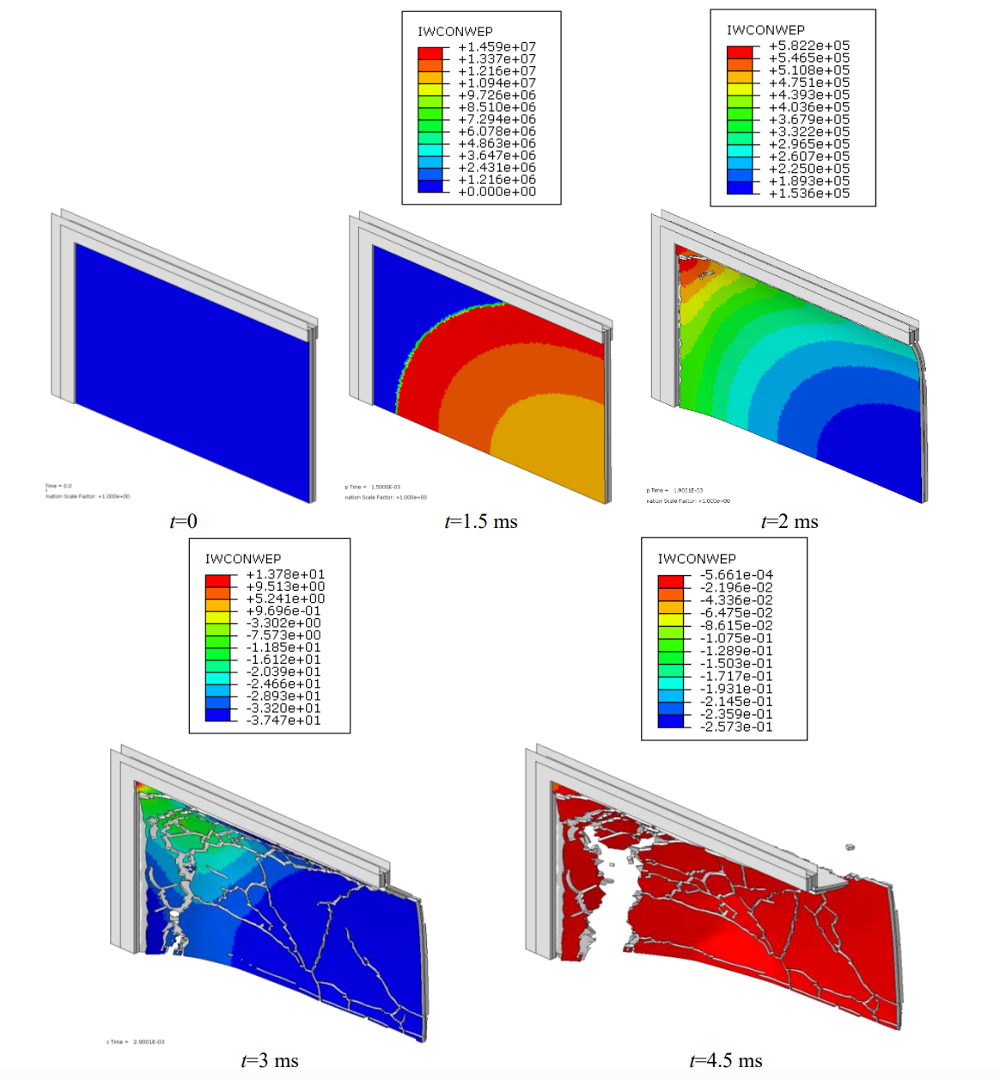
Cracks began at pane centers or corners depending on the pressure front curvature. Delamination at the glass–PVB interface followed within milliseconds, reducing composite stiffness.
Glass pane center points reached:
Such movement, if not contained, could result in hazardous flying debris or complete breach. However, the PVB interlayer provided critical containment, even after full glass fracture.
The interlayer sustained tensile strains of up to 400%, deforming significantly while resisting rupture. Still, in extreme cases (e.g., W = 1 kg, R = 0.5 m), tearing initiated at the pane corners.
Crucially, the study showed that PVB delay failure — even under extreme strain — granting occupants valuable milliseconds to take cover or for systems to engage.
The team proposed a failure classification system:
ZoneBlast SeverityObserved BehaviorILowElastic, no crackingIIModerateInitial cracks, no detachmentIIIHighFull fracture, intact PVBIVCriticalPVB rupture, breach of envelope
This map could help define safe envelope designs based on window geometry, glass thickness, and expected threat level.
The implications of this work are profound, especially for:
While this study offers a leap forward, it also opens doors to new research directions:
In an increasingly urbanized and risk-aware world, façade design must balance transparency and resilience. This study from Bedon et al. offers a rigorous digital methodology to evaluate, design, and optimize laminated glass systems against near-field explosions — a critical step toward resilient, human-centered, and secure architecture.
By capturing the precise mechanics of fracture, delamination, and energy absorption in laminated glazing, this work lays the foundation for safer buildings — not just through materials, but through informed modeling, smart design, and cross-disciplinary innovation.
Download the full report HERE
"Facades Today": is a one-day conference exploring contemporary approaches to façade design, innovation, and cultural meaning.
Expect critical insights, surprising case studies, and practical visions for what comes next in urban envelopes.

Location:
Milan, Monte Rosa 91 - Auditorium

Date:
April 24, 2026 — 09:00 to 18:00

Audience:
The people who shape buildings—designers, engineers & makers

Contact: events@foolsforfacades.com
Join the archive that celebrates architecture’s most iconic façades.
If your company played a role—through materials, systems, or expertise—let us know.
We’re building a record of the people and products behind the world’s most influential buildings.
Are you working on façade innovation, materials, or design methods?
Submit your study and be part of the conversation shaping tomorrow’s architecture.
